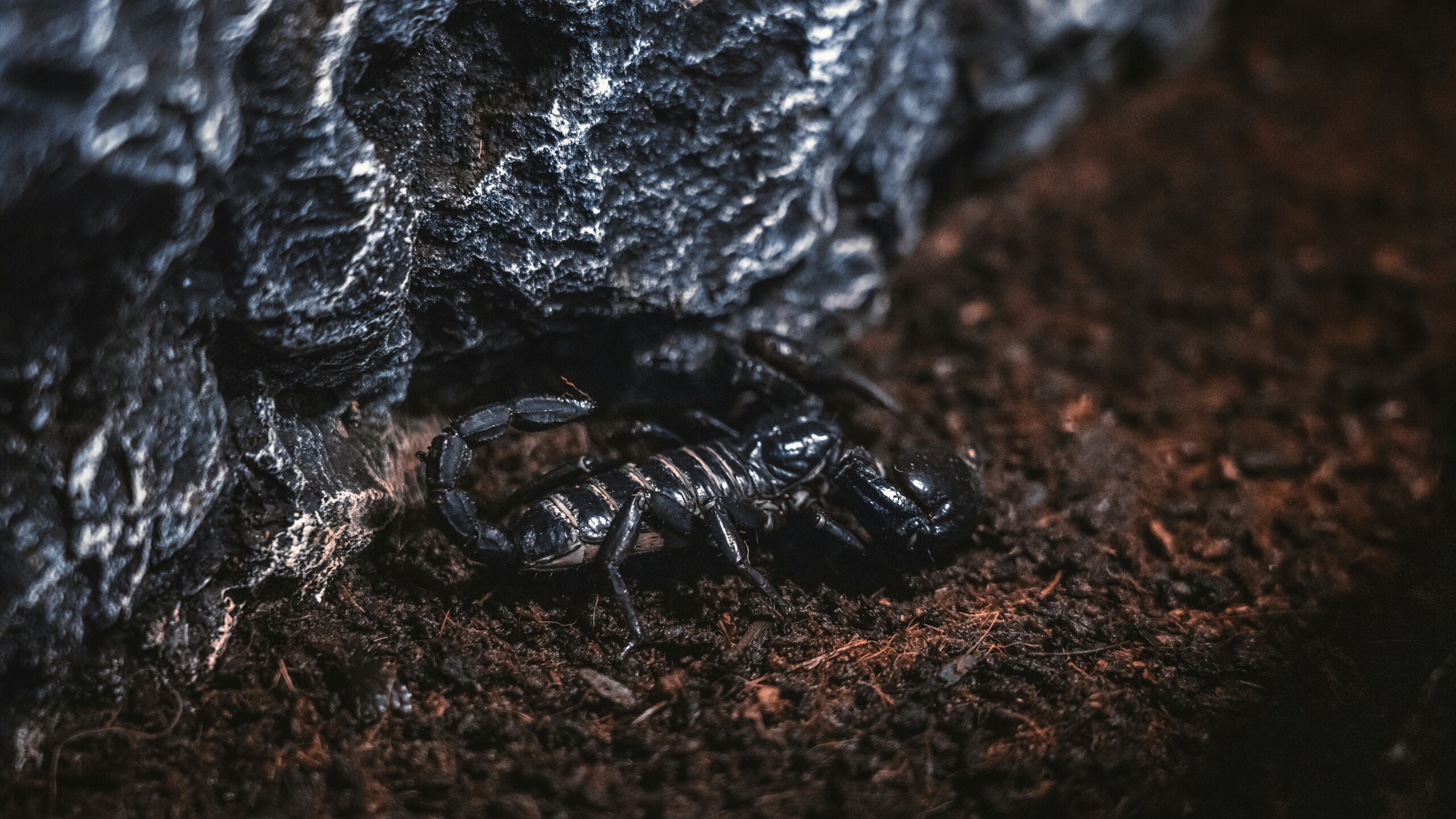Scorpions are some of the most fearsome-looking creatures on earth, with every continent (except for Antarctica) crawling with these nightmare-inducing venomous predators, they’ve cemented themselves on top of the food chain – in the insect world, at least. Now picture scorpions that are twice the size as we normally imagine. Arachnophobes beware because these are the largest scorpion species in the world.
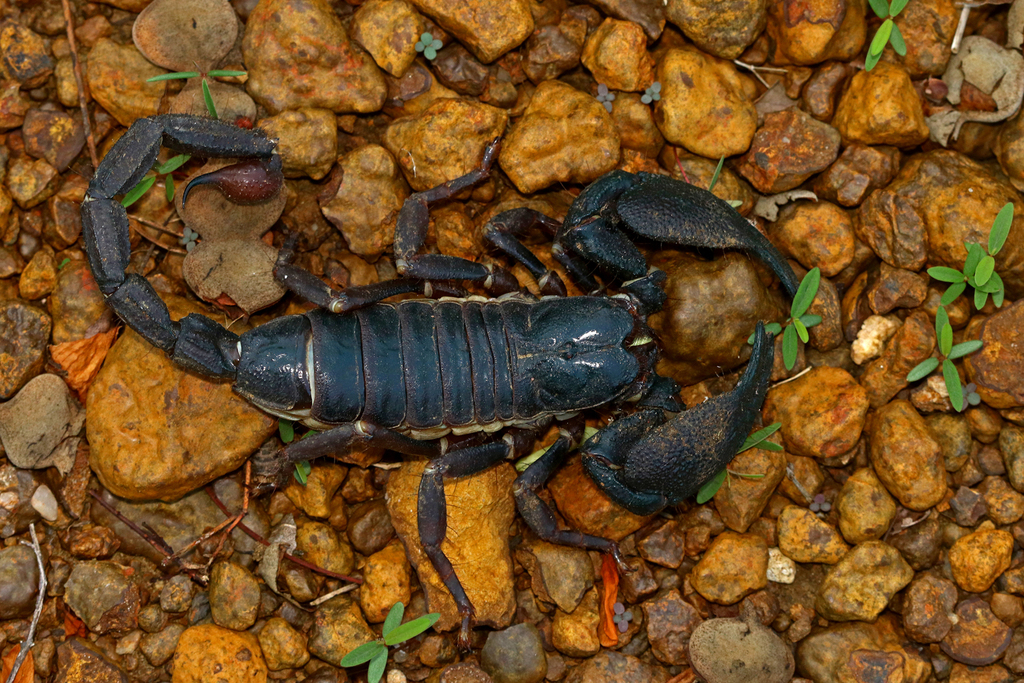
1. Giant Forest Scorpion
- Species: Gigantometrus swammerdami
- Length: 23 cm (9 in)
- Weight: 56 g (2.0 oz)
- Location: India
The giant forest scorpion is officially the largest scorpion species on earth. But get this, the largest recorded ever scorpion is a giant forest scorpion found in the village Krishnarajapuram in Southern India measuring 29.2 cm or 11.49 in from the tip of its pincers to its tail. This gigantic scorpion was found and measured during WWII.
The good news is we humans won’t have to worry about giant forest scorpions. They’re normally wary of humans and bury themselves to ambush prey. The venom from their stingers poses no threat as well as they’ve evolved to hunt by using their powerful pincers to crush their prey.
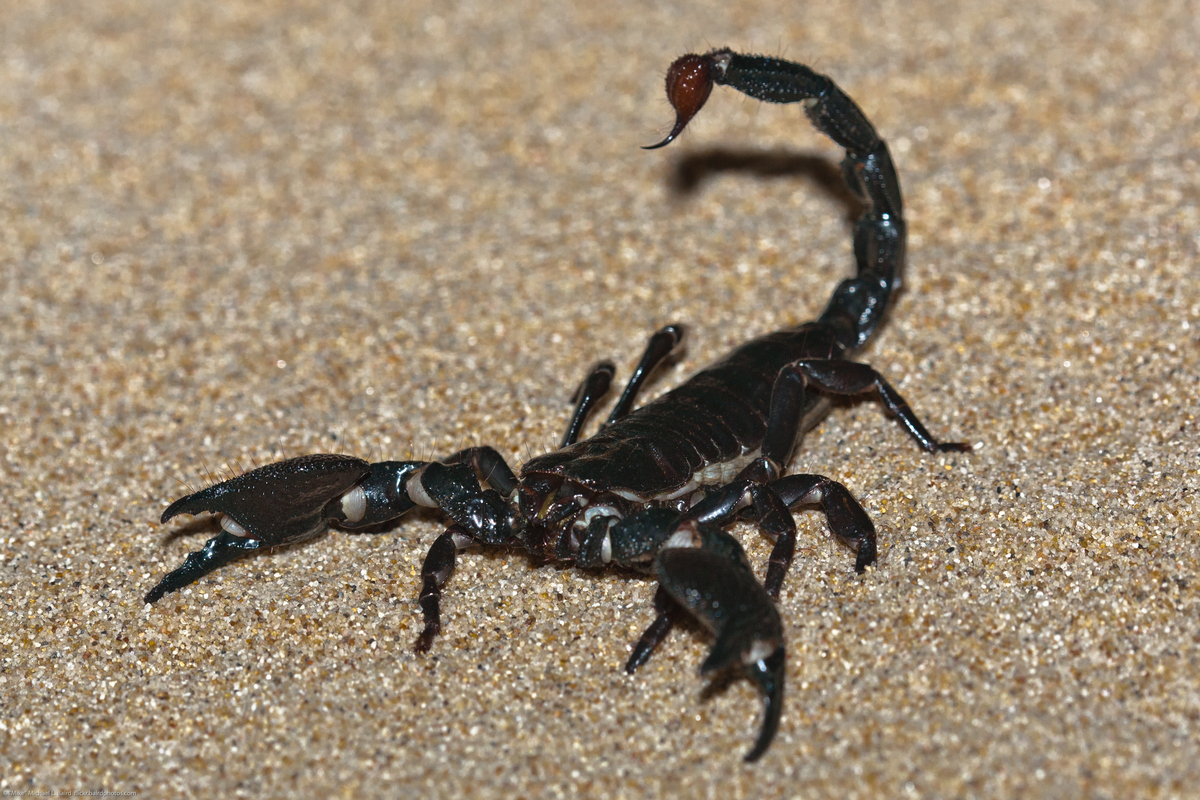
2. Emperor Scorpion
- Species: Pandinus imperator
- Length: 20 cm (7.9 inch)
- Weight: 30 g
- Location: West Africa
The emperor scorpion is often mistaken for the bigger giant forest scorpion with its large size and reddish black body but this scorpion species is mainly found in the rainforests and savannas of West Africa. It also prefers to crush its prey with its pincers rather than paralyze them with its stinger.
Despite their fearsome appearance, emperor scorpions are quite popular in the pet trade because of their docile nature, harmless sting, and attainable diet of termites and the occasional lizards or rodents. If you’ve ever seen a scorpion in a movie, it’s most likely an emperor scorpion.
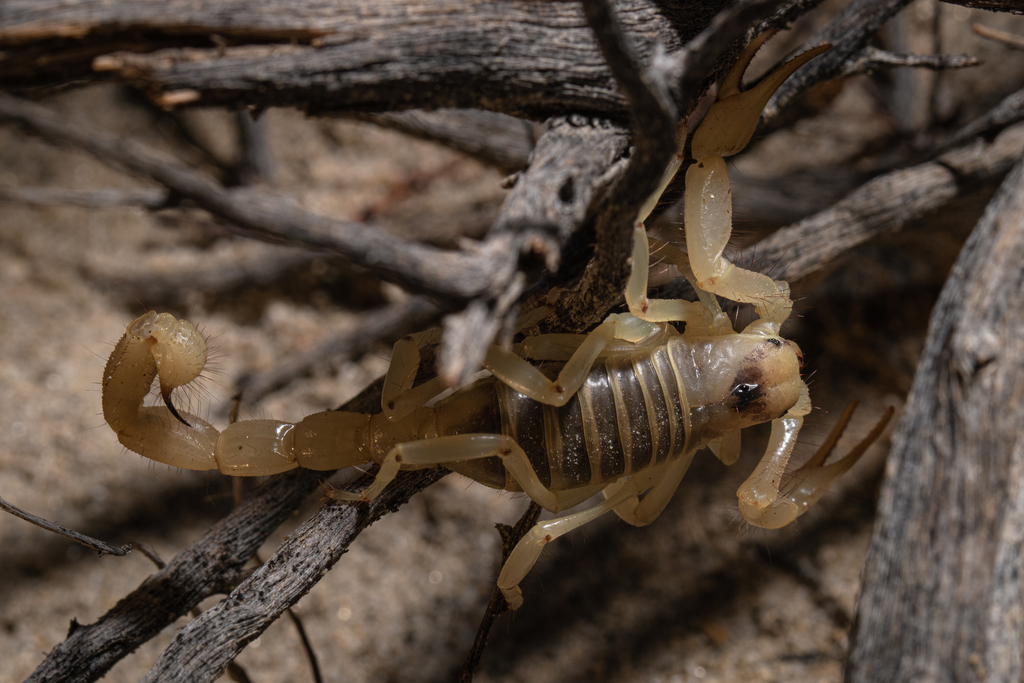
3. Giant Hairy Scorpion
- Species: Hadrurus arizonensis
- Length: 14 cm (5.5 in)
- Weight: 5 g (0.18 oz)
- Location: North America
Third amongst the largest scorpion species is the giant hairy scorpion. They are also known as the giant desert hairy scorpion and the Arizona desert hairy scorpion. They can be found in the deserts of Mexico and the United States, preferring hot and dry environments. Their biggest rival in the desert is the equally fearsome giant desert centipede.
This nocturnal scorpion species got its name from the brown hair that covers most of its body allowing it to detect vibrations as it navigates its desert terrain. Desert explorers can identify this scorpion by its crab-like pincers, dark spine, and yellow body.
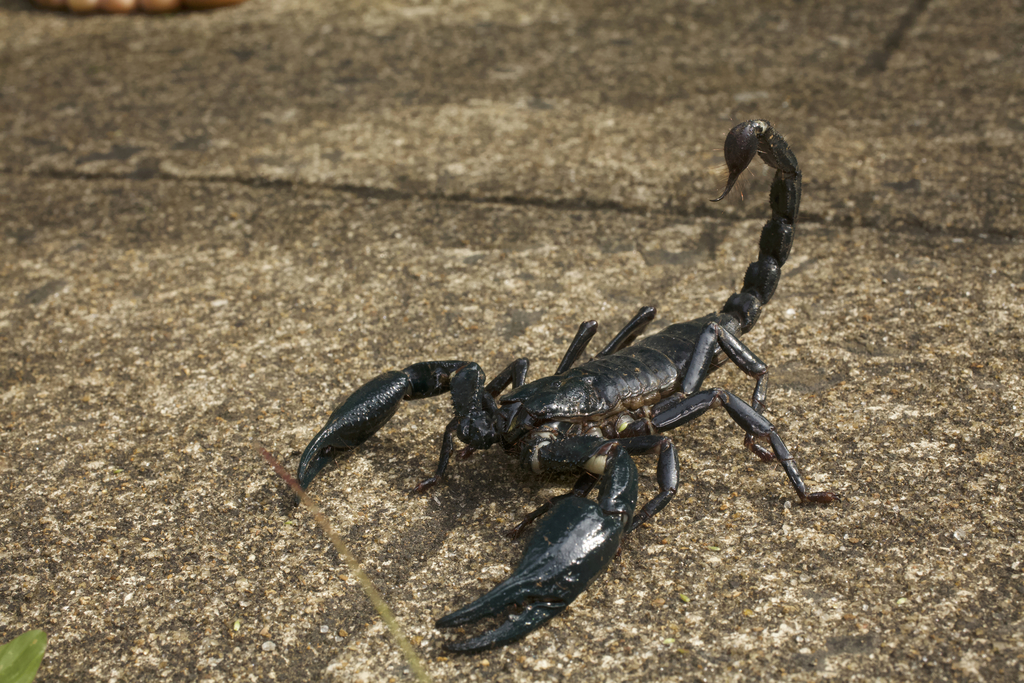
4. Asian Forest Scorpion
- Species: Heterometrus
- Length: 10.16 to 20.32 cm (4 to 8 in)
- Location: Southeast Asia, China, and India
The Asian Forest Scorpion isn’t exactly a singular species but rather a genus of scorpions with similar to nearly identical characteristics. These scorpion species are found in the tropical rainforests of Southeast Asia, China, and India. These large scorpion species typically have dark brown to black bodies, sometimes with a beautiful grayish-green sheen, as seen with the Malaysian Asian Forest Scorpion.
The venom of the Asian Forest Scorpion isn’t lethal but can cause severe pain, numbness, and swelling that can last between a few hours and a few days. Despite the risk of its painful sting, these scorpions can be kept as pets. They are also local delicacies in Southeast Asian countries. Would you eat a skewered scorpion?

5. Transvaal Thick-tailed Scorpion
- Species: Parabuthus transvaalicus
- Length: 9 cm to 11 cm (3.5 to 4.3 in)
- Location: Southern Africa
You wouldn’t want to come across the frightening Transvaal thick-tailed Scorpion as you explore the semi-arid deserts of Mozambique, South Africa, and Zimbabwe. This scorpion species is also known as the Transvaalicus thick-tailed scorpion, black thick-tailed scorpion, South African thick-tail, and– probably the most frightening, giant deathstalker.
Unlike other scorpions with a narrowing tail, as it connects to a pronounced stinger, the Transvaal thick-tailed scorpion’s tail segments grow thicker nearer its stinger. Aside from its tail, it can be identified by its brownish-black body and lighter pincers.
The venom of this jacked-up scorpion can be lethal to humans, especially children when left untreated. Due to its size, the Transvaal thick-tailed scorpion can inject larger amounts of venom compared to the average scorpion. What’s worse is they can spray venom directly to your eyes!
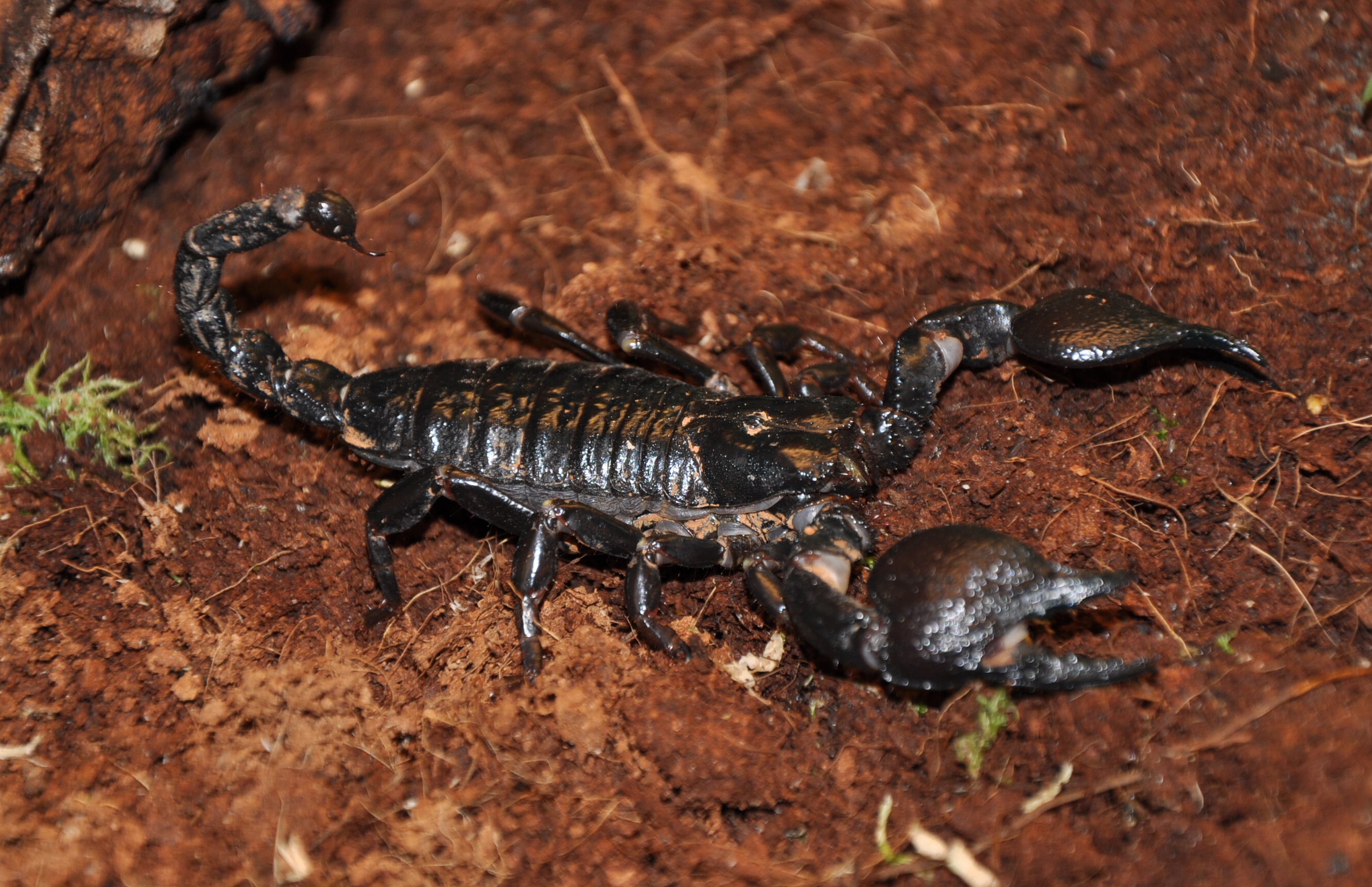
6. Tanzanian Red Clawed Scorpion
- Species: Pandinus cavimanus
- Length: 25 to 32 cm (10 to 12.5 in)
- Location: Tanzania, Africa
The Tanzanian red-clawed scorpion likes to bury underneath rocks, logs, in burrows, or amidst debris in the undergrowth of the rainforests of Tanzania. They are related to the emperor scorpions but are smaller in size and have a redder tinge to their pincers and body.
They are one of the few scorpion species that are kept as pets but they are not recommended for beginners. One wrong move can trigger a sting from these temperamental scorpions. On the bright side, their venom is just akin to a bee sting.
These large scorpion species will give anyone a fright, more so the ones with the more lethal venom. But despite their humongous sizes and scary appearance, we should keep in mind that they’re probably more frightened of us than we are of them. So for both our and the scorpions’ sake, it’s best to keep a respectful distance away when we encounter them in their natural habitat, lest we want to be stung.
Frequently Asked Questions (FAQ)
Are scorpions venomous?
Yes, scorpions are venomous. However, most scorpion stings are harmless to humans and can feel more like a bee sting that may cause skin irritation or inflammation, the severity of which depends on the species of the scorpion.
According to the NCBI, roughly out of 1750 scorpion species in the world, only 25 possess venom that is lethal to humans. These scorpion species with lethal stings can be found in Asia, South America, and Africa.However, with only 25 scorpion species that can be fatal to humans, their stings are ranked second in killing most people around the world, only behind snake bites, as stated by Mount Sinai.
Are scorpions blind?
Scorpions are not blind. But they do have poor eyesight despite having six to twelve eyes: a pair in the center of their carapace and the remaining pairs of eyes on each side.
They don’t see like humans, rather, their eyes have evolved to detect movement and be extra sensitive to light which they use to navigate their environment. Fascinatingly, scorpions use the shadows cast by the moon and stars at night to observe their surroundings.
What eats a scorpion?
Some may be surprised to know that despite their fearsome reputation, scorpions can become prey to other animals, especially those larger than them. These animals include giant centipedes, lizards, rodents, birds of prey– especially owls, and bats.
Are scorpions aggressive?
Scorpions are rarely aggressive and are actually shy creatures. They are afraid of humans and other animals that are bigger than they are.
Scorpions can become aggressive as a defense when they feel threatened, stressed, improperly handled, or bothered in their habitat.
What is the deadliest scorpion?
The deadliest scorpion in the world is the deathstalker scorpion– its name alone is already menacing. According to the Guinness World Records, this pint-sized scorpion possesses the most venomous sting out of all scorpion species.
Those unfortunate enough to be stung will be injected with its potent venom made up of a lethal cocktail of neurotoxins and cardiotoxins, causing nerve and muscle damage. The deathstalker can kill any healthy adult, with the elderly and children being the most vulnerable to its venom.
Do scorpions glow?
Yes, scorpions glow under ultraviolet light, displaying a greenish-blue color. The exact reason why these nocturnal predators glow, scientists are still conducting experiments and developing theories to this day. What they know is that the scorpion’s exoskeleton has a thin outer layer called the “hyaline layer” which is the layers that react to UV light, making the scorpion glow.
Exactly why they glow is still a mystery. Some hypotheses on why scorpions glow include communication, confusing prey, optimizing their vision at night, and blocking out harmful UV rays.

